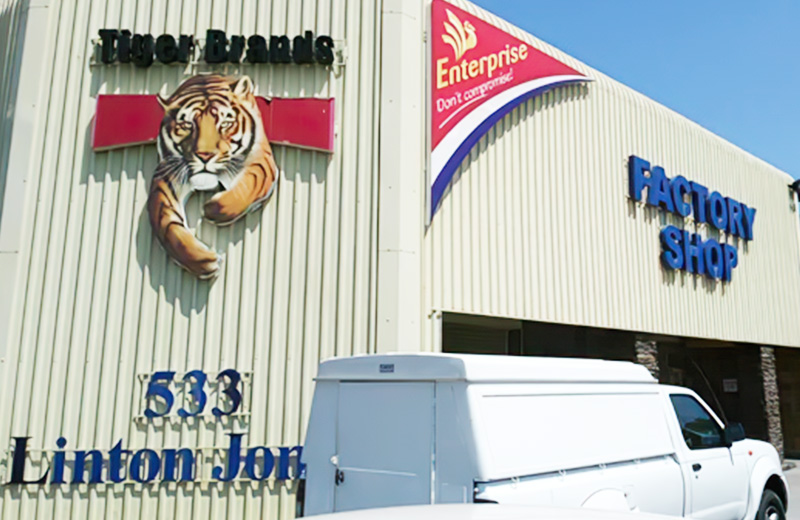
Massive South African manufacturer Tiger Brands says it will soon begin rolling out solar power at its manufacturing sites. This marks a business-wide green energy initiative aligned with the business’ aim to reduce its energy intensity by 30% by 2030.
Tiger Brands’ new initiative represents a multi-million-rand investment with the goal to have 65% of the business’ electricity requirements at a manufacturing level across South Africa sourced from sustainable energy solutions by 2030. Tiger Brands says this will be done through the procurement of Power Purchase Agreements from Independent Power Producers, as well as other renewable energy options.
By 2030, Tiger Brands says that onsite solar power, and other renewable energy solutions, will be installed at 35 Tiger Brands manufacturing sites across South Africa, beginning with 4 sites, which will generate 2 megawatts of power, providing at least a third of their power usage.
The first 4 sites are Tiger Brands’ Henneman Mill in the Free State, King Foods in the North West, as well as its Beverages and HPC (Home and Personal Care) manufacturing plants in Gauteng.
Solar power generation at these sites is expected to go online between the last quarter of this year and the first quarter of 2023.
“Harnessing the power of natural energy sources is first and foremost about minimising our impact on the environment and doing our part to reduce reliance and strain on the national grid so that more South Africans have access to the resource,” says Derek McKernan, Tiger Brands’ Chief Manufacturing Officer.
Tiger Brands’ goal is to reduce its greenhouse gas emissions by 45% against science-based targets by 2030, with a target of net zero emissions by 2050.
Other than solar power, Tiger Brands is also exploring biogas, wind, batteries and hydrogen amongst others. The company has introduced several initiatives to reduce energy intensity at its manufacturing sites to maximise efficiency efforts.
Some of these optimisation initiatives include detailed site investigations to identify water and energy reduction opportunities, as well as ensuring accurate measurement and metering at the sites.
“This is not a one-size-fits-all solution that we are introducing. We want to ensure that we assess the requirements of each site individually and implement initiatives and innovations that best suit each site while removing all forms of power wastage,” says McKernan.
South Africa is currently embroiled in its worst energy crisis ever, with more concurrent daily rolling blackouts expected this year than ever before. The country’s energy utility, the state-owned and managed Eskom, is bitterly entrenched in a fight against ailing infrastructure, decades of mismanagement and corruption, sabotage at its stations, and illegal striking action in a situation that seems nearly impossible to overcome.
President Cyril Ramaphosa in July announced an 8-step plan in which the government hopes to turn the tables on load shedding. Parts of that plan include the government removing the licensing threshold for embedded power generation, raising the threshold from 1MW to 100MW, as well as investing more in sustainable energies.
Edited by Luis Monzon
Follow Luis Monzon on Twitter
Follow IT News Africa on Twitter